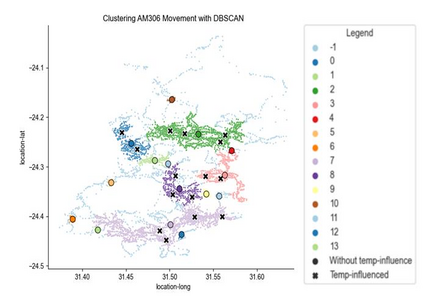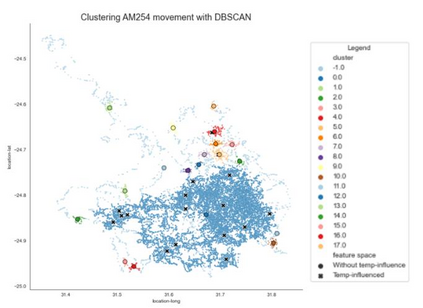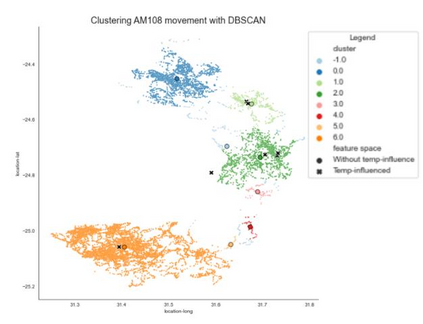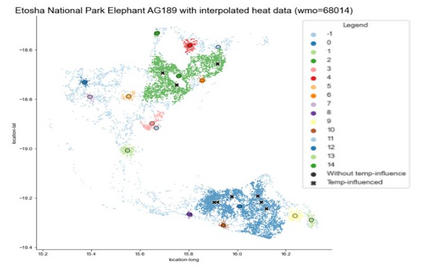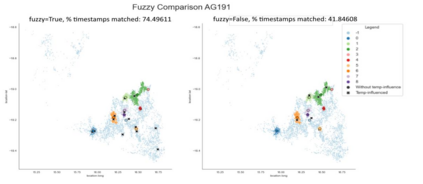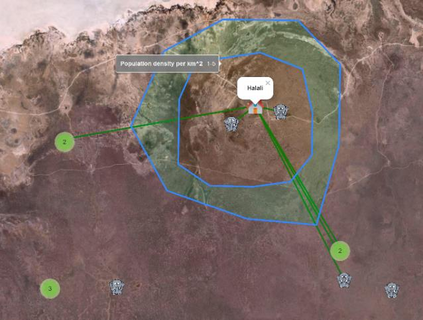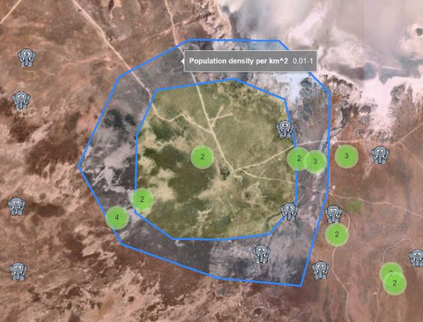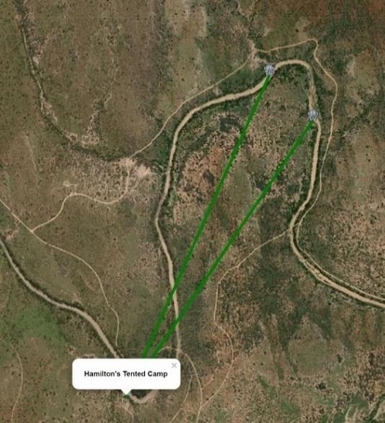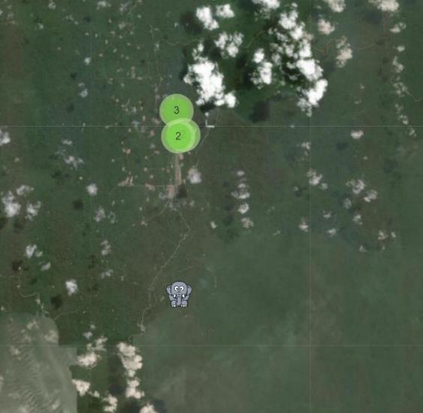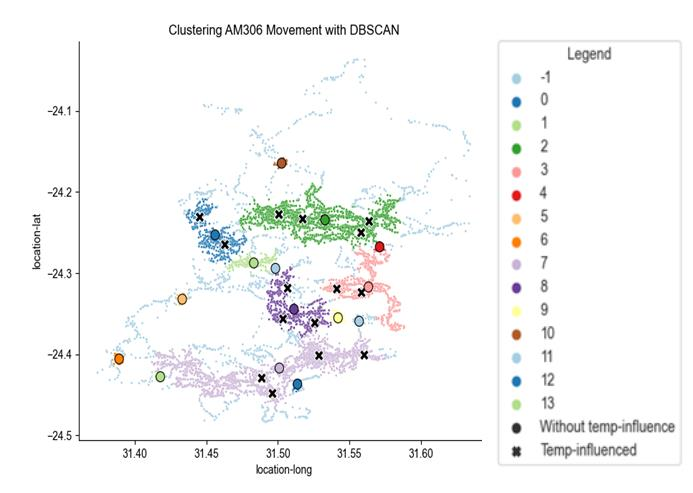Understanding the movement of animals is crucial to conservation efforts. Past research often focuses on factors affecting movement, rather than locations of interest that animals return to or habitat. We explore the use of clustering to identify locations of interest to African Elephants in regions of Sub-Saharan Africa. Our analysis was performed using publicly available datasets for tracking African elephants at Kruger National Park (KNP), South Africa; Etosha National Park, Namibia; as well as areas in Burkina Faso and the Congo. Using the DBSCAN and KMeans clustering algorithms, we calculate clusters and centroids to simplify elephant movement data and highlight important locations of interest. Through a comparison of feature spaces with and without temperature, we show that temperature is an important feature to explain movement clustering. Recognizing the importance of temperature, we develop a technique to add external temperature data from an API to other geospatial datasets that would otherwise not have temperature data. After addressing the hurdles of using external data with marginally different timestamps, we consider the quality of this data, and the quality of the centroids of the clusters calculated based on this external temperature data. Finally, we overlay these centroids onto satellite imagery and locations of human settlements to validate the real-life applications of the calculated centroids to identify locations of interest for elephants. As expected, we confirmed that elephants tend to cluster their movement around sources of water as well as some human settlements, especially those with water holes. Identifying key locations of interest for elephants is beneficial in predicting the movement of elephants and preventing poaching. These methods may in the future be applied to other animals beyond elephants to identify locations of interests for them.
翻译:了解动物的迁移对养护工作至关重要。过去的研究往往侧重于影响动物返回或栖息地的移动的因素,而不是影响动物返回或栖息地的感兴趣地点。我们探索使用集群,以确定撒哈拉以南非洲地区非洲大象感兴趣的地点。我们的分析使用公开可得的数据集进行,以跟踪南非克鲁格国家公园(KNP)、纳米比亚Etosha国家公园以及布基纳法索和刚果地区非洲大象;利用DBSCAN和KMEans群集算法,我们计算大象移动数据并突出重要地点。我们通过将地貌空间与不温度进行比较,我们表明温度是解释流动情况的一个重要特征。认识到温度的重要性,我们开发了一种技术,将非洲大象的外部温度数据添加到没有温度数据的其他地理空间数据集。在用微小的时标解决使用外部数据的障碍之后,我们考虑了这些数据的质量,以及根据这一外部温度数据计算出的群集的质量。我们通过对地貌空间空间空间空间空间的温度变化进行比较后,我们算出了这些主要地点的数值,我们算出了在卫星图像地点的比值,这些地方的比重。我们算出了这些大象值,这些地点的比值,这些比值比值的比值比值比值比值比值比值比值比值比值比值的比值比值比值比值比值比值比值比值比值比值比值在人类的比值在人类的比值在人类的比值在人类的比值在人类的比值地点的比值点,用来了比值是比值在人类的比值是比值在人类的比值在人类的海基基基基基基基基基基值地点的比值地点的比值在比值,这些比值在比值在比值地点的比值在比值地点的比值地点的比值地点的比值地点的比值在人类的比值地点的比值在比值在比值在比值在人类的比值地点的比值在人类的比值的比值在比值在比值的比值在比值在比值在比值在比值的比值在比值在比值在比值在比值在比值在比值在比值在比值的比值在比值在比值在比值在比值的比值在

